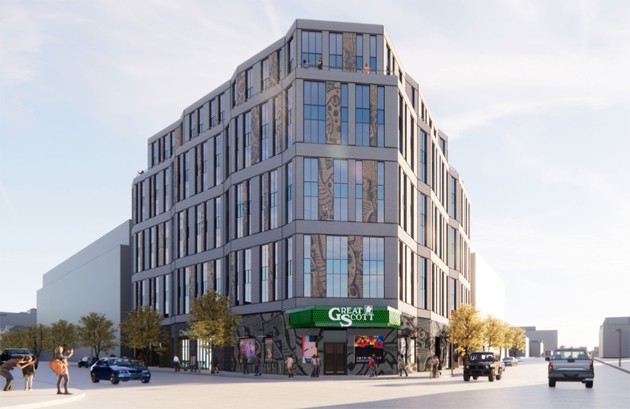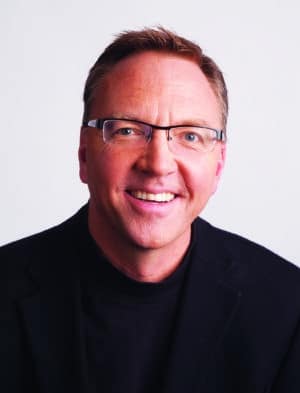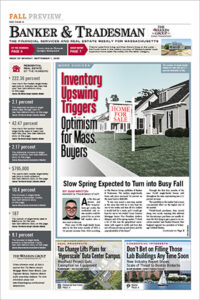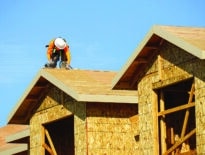Timothy Mansfield
President and CEO, CambridgeSeven
Age: 64
Industry experience: 42 years
Architectural firm CambridgeSeven scouted potential new headquarters in Boston and Somerville before committing last year to remain in its namesake city for future growth. The choice of a new headquarters at 20 University Road near Harvard Square is appropriate for the firm, which relies upon colleges and institutional building projects as a major source of business. One client, Northeastern University, picked CambridgeSeven to design its new post-graduate Roux Institute building, which is scheduled to break ground this spring in Portland, Maine. The building’s design team includes Timothy Mansfield, a 31-year CambridgeSeven employee, who was named president and CEO in January, succeeding Gary Johnson.
Q: How do the new headquarters fit the firm’s needs and what were the requirements in selecting a new location?
A: There were mixed emotions. We had been in 1050 Massachusetts Ave. for almost 50 years. CambridgeSeven designed that building back in 1975, and it had been our home for so long. I’ve been with the firm for 31 years and known that space as my home. We felt given some of the transitions that were happening with the firm and frankly some more logistical conversations with the landlord, this was a good time to think about changing spaces. What was important for us was to keep the wonderful energy in the new space. We looked beyond Cambridge, in Boston and Somerville, and ended up wonderfully coming back to Cambridge and landing in another building we designed – the Charles Square complex – working with Dick Friedman [CEO of Carpenter & Co.], another client.
We came to a great place and it feels like home, because we designed it. We felt the shift brought a whole new energy and opportunity. It’s an interesting mixed-use complex with the Charles Hotel, the Charles Residences facing the river and the Charles offices which link it all together. One of the things we enjoy about the space is we are all on the same floor. At 1050 Mass Ave., we had a mezzanine and a third of the staff was up on the mezzanine. Coming to Charles Square, we’re all on the same floor. It’s created a livelier energy, and we have a “Design Spine,” a pin-up space.
Q: What are the challenges architects face in maintaining high standards in an inflationary era, and how much value engineering is being requested to make projects viable?
A: [Laughs] It’s really been an issue since the pandemic. The cost of financing has been a hurdle, and the burden on the architect is being able to design and respond to the client’s needs, and yet still keep a design element in the project. As we look forward, we were blissfully optimistic that as the pandemic eased, the construction costs would ease and we’d get used to some sense of normalcy. And that honestly hasn’t happened.
The impacts put pressure on architects to design as economically as possible. Some folks might interpret that to mean the standard of quality of design would suffer. In a lot of cases, it does. We don’t feel that CambridgeSeven and a tight budget are exclusive. We’ve worked to have successful projects in spite of the budget constraints. There is always an opportunity to lift the spirit and at the same time respond to economic reality. We are dealing with value engineering at each stage. At the Roux Institute, it has been a robust value engineering effort all the way through, and we’ve been nimble and still maintained what I think is going to be a wonderful project for the city of Portland.
Q: What are some of the common themes you’re hearing from higher education clients?
A: The biggest trend among most higher ed clients that we are seeing across the market is the concept of flexibility. You need to have buildings that have the ability to transition to another use. That’s a paramount approach to any design for a campus. Online teaching is happening, and the reduction in student population on campus and the joining of programs to create efficiencies in space usage come to mind.
Q: Since institutions have long investment timelines, what are examples of how they can take risks on unique designs?
A: Working with Northeastern University, we won a design competition for their Roux Institute in Portland, Maine. It does include mass timber, but the design is very bold and advanced. When you think about higher education institutions and Northeastern specifically, I admire that they are thinking about the future and that’s going to lead into the conversations about flexibility in higher ed. They are taking a risk in design, knowing their investment in Portland is for the long term. They are developing an entire graduate school campus just north of the city. We’re doing some major work in terms of climate resilience in the design. The water is about 7,500 feet from the edge of the buildings in the back cove of Portland Harbor, the old B&M Factory. It’s a beloved historic structure that we are going to restore and renovate into an incubator for accelerator companies in digital engineering. The building is located on the peninsula and there is water in our front yard. We’re raising the building well above the FEMA flood plains maps. We’re also thinking about sustainability in terms of wind, storm management, storm surges and other aspects of the site that need protection.

An architectural rendering of a proposed apartment building on top of a revived Great Scott concert venue in Allston Square. Image courtesy of CambridgeSeven
Q: What’s your approach to designing music venues to coexist with housing, such as the new Great Scott nightclub and apartments in Allston?
A: It’s a heck of a challenge. We designed WBUR’s CitySpace with Boston University, and that is a full-on isolated radio production facility right on Commonwealth Ave. It had an enormous amount of sounds and vibrations from the academic departments above it as well as the vibration from the rumbling of the T, which goes right down the center of Comm Ave. We worked with Acentec and created what I think is an incredibly isolated space for WBUR. It has a glass wall looking through onto Comm Ave. The mission was visibility.
Q: What is CambridgeSeven’s business growth strategy?
A: One of our strategic initiatives is to continue our collaboration with the clients we’ve been working with for years, and want to extend with new partnerships. This is leaning into technology, expanding our practice and continuing the forward-thinking design ethos that is CambridgeSeven’s legacy. I know there’s a lot of scuttlebutt about AI in the design world. We’re starting to leverage it so our designs can be bold with regard to the environment. A growth strategy is pursuing our adaptive reuse practice. What’s interesting since the pandemic, with the office space glut we have in the city and elsewhere, is we’re starting to see the marketing of office-to-anything: office-to-hotel, office-to-higher ed, office-to-residential. Those are in the sweet spot for one of our practice areas: adaptive reuse.
Mansfield’s Five Favorite Restaurants:
- Giulia, Cambridge
- La Bodega, Watertown
- Coppa, Boston
- Field & Vine, Somerville
- Super Fusion Cuisine II, Watertown







